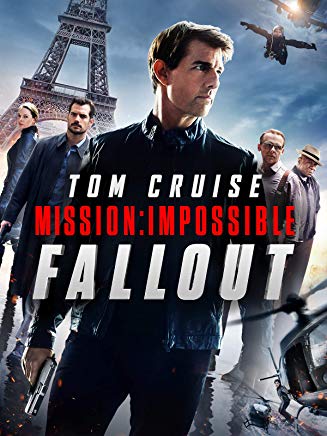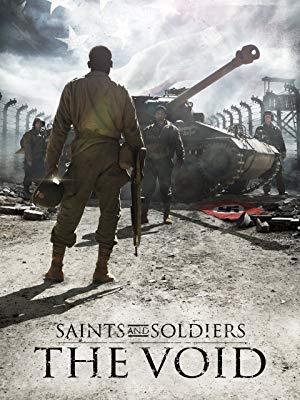 Mission: Impossible – Fallout (2018) – I have been completely impressed with the Mission: Impossible movies that they’ve made after the caesura between 2006 and 2011. Instead of trying to shake up the formula or let individual directors use the franchise as a vehicle for his “vision,” they’ve taken the formula — i.e., “what people watch Mission: Impossible movies for” — and use as a platform to be ambitious.
Mission: Impossible – Fallout (2018) – I have been completely impressed with the Mission: Impossible movies that they’ve made after the caesura between 2006 and 2011. Instead of trying to shake up the formula or let individual directors use the franchise as a vehicle for his “vision,” they’ve taken the formula — i.e., “what people watch Mission: Impossible movies for” — and use as a platform to be ambitious.
In case you’re wondering, the formula is:
- A Rube Goldbergian scheme by the IMF, a la the original series.
- Something goes wrong (or, usually, several somethings), and a lot of stuff has to be made up on the fly.
- Tom Cruise performs stunts that would kill a non-Scientologist.
I tell you, though: If anyone ever offers you the job of IMF Secretary, run away. Those guys have incredibly short lifespans.
 Curvature (2017) – It’s well acted, and very well shot, which might distract you from the fact that the time-travel plot makes absolutely no sense in retrospect. However, given that complaint also holds true for Avengers: Endgame, I suppose we can cut a little slack to a move that probably had less than 1/20 of Endgame’s budget.
Curvature (2017) – It’s well acted, and very well shot, which might distract you from the fact that the time-travel plot makes absolutely no sense in retrospect. However, given that complaint also holds true for Avengers: Endgame, I suppose we can cut a little slack to a move that probably had less than 1/20 of Endgame’s budget.
 Saints and Soldiers: The Void (2014) – In a break from the pattern for the previous two Saints and Soldiers movies, this one does not feature Corbin Allred in a starring or supporting role. There is a vague Mormon flavor here, but it’s even more diluted then before; one supporting character is (a) said to be from Pocatello, Idaho, (b) says a silent prayer early on before going out in his tank, (c) trades the cigarettes from his rations for pulp novels (including one featuring Porter Rockwell), and (d) has an itty-bitty picture of Jesus taped up with his other pictures inside his tank. (The other Mormon Easter eggs are the presence of Matthew Meese from the BYU-spawned comedy show Studio C in a supporting role, a Mormon hip-hop/pop singer Alex Boye in an even smaller role.)
Saints and Soldiers: The Void (2014) – In a break from the pattern for the previous two Saints and Soldiers movies, this one does not feature Corbin Allred in a starring or supporting role. There is a vague Mormon flavor here, but it’s even more diluted then before; one supporting character is (a) said to be from Pocatello, Idaho, (b) says a silent prayer early on before going out in his tank, (c) trades the cigarettes from his rations for pulp novels (including one featuring Porter Rockwell), and (d) has an itty-bitty picture of Jesus taped up with his other pictures inside his tank. (The other Mormon Easter eggs are the presence of Matthew Meese from the BYU-spawned comedy show Studio C in a supporting role, a Mormon hip-hop/pop singer Alex Boye in an even smaller role.)
As previously, this story tries to tell a small, personal story against the backdrop of WWII; in this case, in the final weeks of the war, a couple of Hellcat tank destroyers are tasked with removing a few hanger-on Panzers dug in in the “Void” between the front lines and the rear echelon. Unlike the other two, this story’s emotional heart isn’t in the breaking point of valor and spirit reached during the hell of war; instead, it’s about racism, as segregated Negro soldier Jesse Owens (no relation to the famous Jesse Owens), played by K. Danor Gerald, is thrown in with some overt racists in the Hellcats. Apparently writer/director Ryan Little doesn’t expect modern audiences to follow up on moderately subtle racist behavior; he lets Gerald and Boye have a far-too-long scene spelling it out for us, and then several more preachy scenes as we go along.
In the end, this isn’t a movie about the protagonist facing and learning from his extremity, as with the other two; it’s about all the people around the protagonist learning a lesson. Which is good, sure, but it’s not the emotional payload that you expect in a Saints and Soldiers movie.